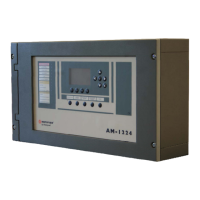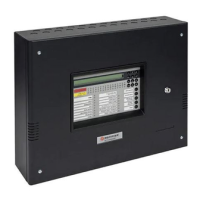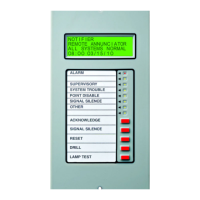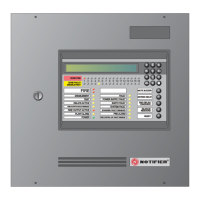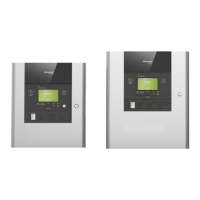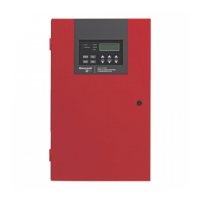AM-8000 Manuale di installazione PAGE - 3
AM8000_manu-inst Doc. 160.1-AM8000-ITA Rev A.3 NOTIFIER ITALIA
GENERAL DESCRIPTION
AM-8000
control unit is a fire detection control unit manufactured in conformity with the EN.54.2 and EN.54.4 rules.
Technical features :
Multi-microprocessor system
LCD-8000-L / LCD-8000-F with display TFT 7” (800 x 480 with backlit ) and 256 colors and touch-screen with
keyboard simulation to program and configure the system.
Keys dedicated to specific functions : Evacuation, Reset delays, Buzzer Silencing, Silencing / Siren Reset,
System Reset.
LINES:
2 analogue lines programmable to closed or open loop for the connection of the field elements
Each line can drive 159 sensors + 159 input and output modules
max 4 loop each panel using the optional 2 loop LIB-8000 card.
SERIAL INTERFACES:
- 1 x RS.485 to drive remote LCD repeaters.
- 2
x Can-Bus lines to connect to closed loop ring for a network of up to 8 panels and 8 LCD-8000 terminals
POWER SUPPLY:
Standard 27,6Vdc - 4A total.
Battery charger 27,6 Vdc – 1,5A (
with temperature compensation).
User output 28Vdc (+3% ÷ -17%) 1.5A, to power external loads such as sirens, bells, etc. .
OUTPUTS:
1 Supervised Siren Output
1 General Alarm Output with contacts free from voltage
1 General Fault Output with contacts free from voltage
Mechanics
The control unit mechanics is suitable for wall installations
Sizes
403mm (L) x 408mm (H) x 240mm (P)
Protection grade : IP 30
Operation temperature : -5 °C a +40 °C
Stockage
temperature: -10 °C a +50 °C
Weight: 7.5 Kg
Main Functions
3 password levels (Operator - Maintenance – Configuration)
4 total access levels in conformity with the EN.54 rules
Programmable text : point description through 32 characters; zone description through 32 characters
500 physical zones and 400 logical groups
CBE Control Equations (Control-by event) for activation with logical operators (And,Or, Xor , etc.).
Event historical file with the last 2000 events in non-volatile memory
Real time clock
Line self-programming with automatic recognition of the type of the connected devices.
Automatic recognition of points having the same address.
Decision algorithms for the alarm and fault criteria.
Automatic sensitivity change Daytime /Night.
Signaling of need for sensor cleaning
Signaling of poor sensor sensitivity
Programmable alarm threshold for sensors
Pre-defined software function programming for the various devices used
Walk-Test function for zones.
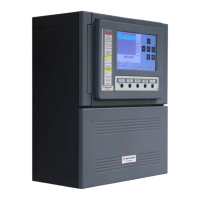
